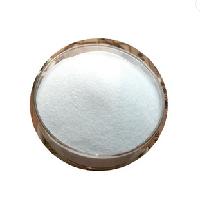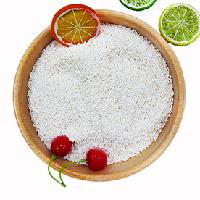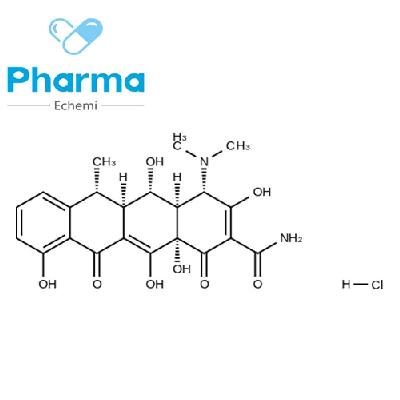-
Categories
-
Pharmaceutical Intermediates
-
Active Pharmaceutical Ingredients
-
Food Additives
- Industrial Coatings
- Agrochemicals
- Dyes and Pigments
- Surfactant
- Flavors and Fragrances
- Chemical Reagents
- Catalyst and Auxiliary
- Natural Products
- Inorganic Chemistry
-
Organic Chemistry
-
Biochemical Engineering
- Analytical Chemistry
-
Cosmetic Ingredient
- Water Treatment Chemical
-
Pharmaceutical Intermediates
Promotion
ECHEMI Mall
Wholesale
Weekly Price
Exhibition
News
-
Trade Service
Polyurethane is a polymer widely used in daily life, according to its synthetic raw materials and polymerization methods, polyurethane has a wide range of applications
in different fields.
However, because most of its synthetic raw materials are chemical raw materials, which have great harm to the environment, in recent years, we have been committed to the research of polyurethane synthesis based as raw materials, and polyurethane products synthesized from bio-based raw materials are fast and environmentally friendly and cheap
.
In this study, polyurethane coatings were prepared by using natural starch as a polyol and combining with isocyanate crosslinker in an organic solvent, which has a wide range of coating on-line coatingol.
com on
a variety of substrate surfaces.
Author | LI Jijie, DING Yuanqi, ZHANG Jiaming, WANG Shuxuan
WANG Wei,XIA Qiying,LIANG Shiming,MA Dengxue
1.
School of Materials Science and Engineering, Linyi University
2.
School of Chemistry and Chemical Engineering, Linyi University
1 Introduction
Polyurethane materials are a polymer with superior performance, as one of the five major engineering plastics, polyurethane has a wide range of applications, and the product state is diverse, including coatings, foams, adhesives, etc
.
Today, polyurethane materials occupy a vital part in industrial production, because of their good wear resistance, elasticity, viscosity and other characteristics, are widely used in food processing, clothing and accessories, construction engineering, national defense engineering and many other fields
.
2 Experiments
Starch-modified polyurethane: starch molecules are natural polyol substances containing multiple reactive hydroxyl groups, most of which can be used in the production
of a variety of chemical products.
Starch is cheap and readily available, and has good biodegradability
.
We use tapioca starch in starch, which is a powder substance made by dehydration and drying of cassava plants through various processes, which has excellent film-forming, strong permeability, high viscosity and other characteristics, but its protein content and ash content are lower
than most starches.
Therefore, tapioca starch is mostly suitable for the production of starch derivatives for various purposes, and is widely used
in the food processing industry, medical field, chemical industry, etc.
However, tapioca starch also has the disadvantages of high temperature resistance, poor shear resistance, poor acid resistance, and poor cold water solubility, making it unable to be applied
in many fields.
In order to meet the modern industrial new technology standards and adapt to the requirements of new processes, relevant scientific and technological workers from all over the world use the physical and chemical properties and structure of tapioca starch to finally develop starch modification technology, thereby broadening its use in
many industries.
Starch is a natural polymer compound, in nature is easy to be corroded by microorganisms to produce weak chains, carboxylic acids and other low molecular products that are more easily corroded by microorganisms, in the preparation of polyurethane materials after grafting starch molecular chain, starch decomposition of carboxylic acid can also be used as a hydrolysis catalyst to accelerate hydrolysis, oxidation of polyurethane materials, and finally will be completely decomposed into harmless substances
.
Biodegradable polyurethane materials were prepared by changing the ratio of -NCO/-OH and starch content, and it was found that with the increase of -NCO/-OH ratio and the increase of starch content, the strength and crosslinking density of the prepared polyurethane also increased, and it also had certain biodegradable properties
.
Starch can also be used as a polyol to replace the raw material
produced from fossil fuels.
Starch-modified polyurethane materials not only have the advantages of wear resistance and easy degradation, but also have the advantages
of no pollution to the environment and resource saving.
In addition, starch-modified polyurethane plays a certain role
in enhancing the mechanical strength, chemical resistance, wear resistance, durability and flexibility of the material.
Under the pressure of environmental protection regulations, the application prospects of starch-modified polyurethane materials are increasingly broad.
1.
1 Research status of modified polyurethane in China
The degradation properties of ultrasonic modified starch were used to improve the degradation properties of polyurethane materials, and composite materials
with better mechanical properties, degradation properties and biocompatibility were prepared.
This will have certain research significance
in drug carrier materials and tissue engineering scaffold materials.
Polyurethane materials with high added value prepared by the reaction of polyhydroxyl groups and isocyanates in natural plant raw materials are widely used in foams, rubbers, coatings, adhesives and packaging
.
The researchers studied the antibacterial properties and biodegradability after disposal in the preparation of polyurethane in plant raw materials, as well as the antibacterial properties and biodegradability after use, so as to realize the all-round green environmental protection
of materials from raw materials, manufacturing, use to disposal.
In the chain expansion stage of the synthesis of polyurethane added starch, so that starch molecules somehow participate in the reaction, so as to introduce starch into the polyurethane product, the experiment successfully synthesized biodegradable waterborne polyurethane, the addition of starch enhances the biodegradability of waterborne polyurethane, and the higher the starch content, the better
the biodegradability.
The use of castor oil to modify waterborne polyurethane, synthetic new waterborne polyurethane containing castor oil-based, polyacrylate composite emulsion
.
At the same time, it is also found that the content of castor oil has a certain effect on the water resistance of the material through experiments, and it is found through data that with the continuous increase of castor oil content, the water resistance of the material is also enhanced
.
Taking the substance starch as a polyol, after acetylation modification to improve its solubility, combined with polyisocyanate crosslinker and terminal hydroxypolydimethylsiloxane (PDMS-OH) functional components, an environmentally friendly transparent polyurethane functional antifouling coating was prepared by NP-GLIDE method, which has broad application prospects
on the surface of wood, metal, glass and other substrates.
2.
1 Experimental drugs
(1) Isophorone diisocyanate (IPDI), 99%, Shanghai Aladdin Biochemical Technology Co.
, Ltd.
;
(2) 1,4-Butanediol (BDO), 98%, Shanghai Aladdin Biochemical Technology Co.
, Ltd.
;
(3) Dibutyltin dilaurate, chemically pure, Shanghai Aladdin Biochemical Technology Co.
, Ltd.
;
(4) Polypropylene glycol (PPG-1000), analytical pure, Shanghai Aladdin Biochemical Technology Co.
, Ltd.
;
(5) Acetone, analytical purity, Nanjing Chemical Reagent Co.
, Ltd.
;
(6) Food grade tapioca starch
.
2.
2 Experimental equipment
(1) Thermogravimetric Analyzer (TGA), Q600 SDT, TA Company;
(2) Infrared spectrometer (FT-IR), Nicolet is5, Sennuo Hi-Tech International Experimental Technology Co.
, Ltd.
;
(3) Electronic universal testing machine, CMT7105 type, Zhuhai Sansi Metrology Instrument Co.
, Ltd.
;
(4) Vacuum drying oven, DZF-6020, Shanghai Boxun Industrial Co.
, Ltd.
;
(5) Constant temperature heating magnetic stirrer, DF-101S, Gongyi Yuhua Instrument Co.
, Ltd.
;
(6) Scratch hardness tester, QHQ-A, Hua Guo Precision Testing Equipment Factory
.
2.
3 Experimental substrates
PTFE sheet
.
2.
4 Experimental process
2.
4.
1 Preparation of starch-modified polyurethane coatings
Weigh 15g polyether polyol mixed with 10g tapioca starch and vacuum defoam for 0.
5h
at room temperature.
Constant temperature to 30 °C, add 2% dibutyltin
dilaurate with the total mass of the prepolymer.
Start magnetic stirring, install condensing device, fill with nitrogen, the system temperature is raised to 125 °C, and after 3h of reaction, the system temperature is reduced to 85 °C
.
Isophorone diisocyanate (IPDI) and an appropriate amount of 1,4-butanediol BDO were measured with the amount ratio of 0.
8:1, 1.
0∶1 and 1.
2∶1 to -OH substances, mixed well, placed in a constant pressure drip funnel, added dropwise in a nitrogen atmosphere, and reacted for 1h
at 85 °C.
2.
4.
2 Preparation of polyurethane films
After the above reaction, the obtained viscous solution is coated with a liquid film
of a certain thickness on the PTFE plate.
Dry at room temperature for 3~5d to form a film, and then dry in a vacuum drying box at 70 °C for 1~2h to remove moisture and residual solvents
.
After decoating, sealed and preserved for later characterization
.
2.
5 Analysis and characterization
2.
5.
1 Infrared spectroscopy
The prepared modified polyurethane coating was tested by Fourier transform infrared spectroscopy, and the scanning range was 500~4000cm-1
.
2.
5.
2 Thermogravimetric analysis
The starch-modified polyurethane coating with different amounts of -NCO and -OH substances was dried and sampled, and each sample was thermogravimetrically analyzed with a thermogravimetric analyzer
.
Analysis conditions: Under the nitrogen atmosphere with a temperature range of 15~550 °C, the temperature change rate is adjusted to 10 °C/min
.
2.
5.
3 Pencil scratch hardness test
Use a pencil hardness tester to use pencils with different hardness from soft to different specimen surfaces to scratch scratches, and record the pencil hardness that can leave scratches on the surface of the specimen is the surface hardness
of the specimen.
2.
5.
4 Degradation performance test
The modified polyurethane coating was grouped and soaked in a NaOH solution with a mass fraction of 1.
0%, a sample was taken from the alkali solution at regular intervals at room temperature, rinsed with deionized water, dried in a vacuum drying oven at 60 °C, and then taken out after constant weight, and then weighed the sample obtained by accelerated degradation with an electronic balance
.
2.
5.
5 Mechanical property test
The tensile strength
of starch-modified polyurethane coating samples was determined using a microcomputer-controlled electronic universal testing machine.
According to GB/T7124-2008 standard, the test coating film was cut into a dumbbell shape, the number of splines was determined, and the tensile speed was 10mm/min
.
3.
1 Infrared spectroscopic analysis
Figure 1 shows the infrared analysis
of isocyanate groups during prereaction with starch for 3 h at 125 °C.
The characteristic peak around 2900cm-1 is the C-H bond vibration absorption peak, and the amide absorption band
at 1540~1530cm-1.
-The characteristic peak of the NCO group is around 2260cm-1, and the NCO peak gradually decreases
with the decrease of isocyanate content during the pre-reaction process.
3.
2 TG analysis
It can be seen from Figure 2 that with the gradual increase of isocyanate content, the thermogravimetric loss of the sample gradually decreases, and the amount of residual carbon gradually increases
.
However, it can also show that isocyanates can effectively improve the thermal stability
of polyurethanes.
There are two main peaks in polyurethane with isocyanate, the first peak is the decomposition of urethane in the polyurethane molecular system at about 270~320 °C; The second peak is mainly the decomposition
of polyether in the soft section of the polyurethane molecular system at 380~410 °C.
The decomposition of oligomers occurs
at about 15~200 °C.
It can be seen from the figure that with the increase of isocyanate content, it can be seen that there is a significant difference between the left and right peaks, and the endothermic degradation of the right peak gradually decreases, indicating that the addition of isocyanate has a great improvement in the high temperature resistance of polyurethane, combined with the TG diagram it is easy to see that the content of isocyanate has a significant improvement in the thermoweight loss and thermogravimetric rate of polyurethane, indicating that isocyanate-modified polyurethane coatings can get good results
.
3.
3 Pencil scratch hardness test
The test results, shown in Table 1, show that the hardness of the coating sample gradually increases as the isocyanate base content increases
.
Polyurethane is a block copolymer whose main component is polyurethane, and soft and hard segments together form macromolecular chains
.
Amorphous polyester or polyether composed of soft segments, the glass transition temperature of the soft segment chain is low, it is in a high elastic state at room temperature, and when the soft short chain is stretched at room temperature, it can produce large deformation and excellent resilience
.
Hard segment is composed of crystalline and transverse cross-linking of diisocyanate, although the hard segment of the segment is short, but because it contains a variety of polar groups, the cross-linking between macromolecular chains is determined by the hydrogen bond and crystallinity between molecules, a variety of polar groups can provide the necessary junction conditions for the large elongation and rebound of the soft segment, thereby hindering the relative slippage between molecules, and then giving the soft segment a certain strength, polyurethane in the structure of soft and hard segment mosaic coexistence gives the material high elasticity and strength effective unity
。
Isocyanate as a hard segment, which contains rigid groups, which increases the degree of crosslinking, so that the concept of the polymer segment is not easy to change, making the overall structure more rigid
.
By changing the ratio and structure of soft and hard segments in the molecular chain, the resulting polyurethane coating can have different hardness and elongation
.
3.
4 Degradation performance test
Polyurethane materials are difficult to degrade and not easy to recycle, so they cause great harm
to the ecological environment.
Therefore, it is very important
to introduce degradable polyurethane materials.
It can be seen from Figure 3 that when starch-modified polyurethane coating is degraded by dilute NaOH solution, the weight of the sample gradually decreases and the weight loss rate increases with the extension of time, which indicates that the starch-modified polyurethane coating prepared has partial degradability
.
As the isocyanate content increases, the weight loss rate decreases, indicating that the higher the isocyanate content, the less conducive to degradation
.
3.
5 Mechanical property test
Isocyanates will slowly undergo a dimer reaction at room temperature to form ureadinedione dimers, and if tertiary amines and phosphine compounds are present, they can catalyze the reaction and accelerate
the reaction.
The addition of isocyanate increases the degree of cross-linking of the structure of the original system, reduces the distance between molecules, and makes the polymers closer
to each other.
Therefore, after adding isocyanate, the shear strength of the modified polyurethane will be reduced
.
Isocyanates account for a large proportion of the hard segment composition, so they have a huge impact
on the microphase separation structure of polyurethane products.
When the hardness of the polyurethane coating film after the modification operation increases, the modulus is large, and the elongation at break of the coating film decreases when the isocyanate content increases
.
As shown in Figure 4, the structure of low content isocyanate modified polyurethane monomer is unconventional, which is very conducive to crystallization, the six-membered ring structure can significantly improve rigidity in the molecular structure, the isocyanate content increases, the symmetry of the structure is weakened, the position of the isocyanate group is different, the structural reactivity is also different, which brings difficulties to the crystallization of modified polyurethane, resulting in weak mechanical strength, but the material compliance is improved, which brings good elastic elongation
to the material.
Therefore, the experimental design is to add a certain amount of isocyanate on a certain basis to ensure that the modified polyurethane has a certain mechanical strength
.
3 Conclusion
In this paper, starch-modified polyurethane coatings were successfully prepared and their degradation properties were studied
.
By investigating the effects of thermal stability, scratch hardness, degradation properties and mechanical properties of starch-modified polyurethane coating, it is found that when the isocyanate content increases, the thermogravimetric rate decreases, the residual carbon content increases, and the thermal stability increases
.
After mechanical property test and analysis, it is found that with the increase of polyurethane content, the elongation at break of the coating film decreases, and the mechanical properties decrease
slightly.
Combined with the influence of various factors, when the amount ratio of -NCO to -OH is 1.
0:1.
0, the coating has good degradation properties, mechanical properties and thermal stability
.
Source | Shandong Chemical Industry Vol.
51, No.
6, 2022, Frontiers
of Polyurethane Science







